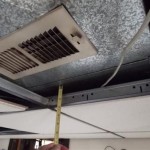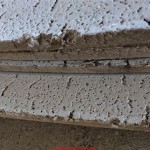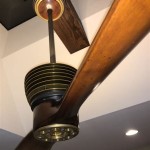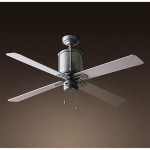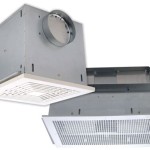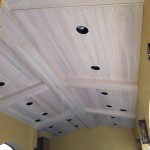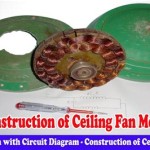Everything You Need to Know About Light Box Ceilings and Walls
Light box ceilings and walls are increasingly popular architectural and interior design elements, offering a dynamic and aesthetically pleasing way to illuminate spaces. They involve translucent or diffusing materials illuminated from behind, creating the illusion of natural light or displaying vibrant colors and patterns. This technology is applicable in a wide range of settings, from commercial spaces and healthcare facilities to residential interiors and art installations. Understanding the components, design considerations, installation process, and benefits of light box ceilings and walls is crucial for anyone considering incorporating them into their projects.
At their core, light box ceilings and walls consist of several key components: a frame or structure to hold the system together, a light source, a diffusing material, and often a reflective backing to maximize light output. The frame can be constructed from materials like aluminum, steel, or wood, depending on the size, application, and aesthetic requirements of the project. The light source is typically LED-based, chosen for its energy efficiency, long lifespan, and ability to produce a wide spectrum of colors. The diffusing material scatters the light evenly, eliminating hotspots and creating a smooth, consistent glow. This material can be acrylic, fabric, or a specialized translucent film.
The design of a light box ceiling or wall is highly customizable, allowing for a wide range of creative possibilities. Size, shape, color, and imagery can all be tailored to meet specific design objectives. For instance, a large-scale light box ceiling might simulate the appearance of a skylight, bringing natural light into an interior space that would otherwise lack it. A smaller light box wall could display artwork, branding, or wayfinding information. The integration of dynamic lighting controls allows for even greater flexibility, enabling the adjustment of brightness, color temperature, and even the creation of animated effects.
Understanding the Key Components of a Light Box System
A successful light box installation hinges on the careful selection and integration of its individual components. Each part plays a critical role in the overall performance and aesthetic appeal of the system.
Frame Structure: The frame provides the structural support for the entire light box assembly. It must be robust enough to withstand the weight of the other components and maintain its shape over time. Aluminum is a common choice due to its lightweight yet strong properties, resistance to corrosion, and ease of fabrication. Steel offers even greater strength and is often used for larger installations. Wood can provide a warmer, more natural aesthetic but requires careful treatment to prevent warping or rot. The frame design should also consider accessibility for maintenance and replacement of the light source.
Light Source: LEDs (Light Emitting Diodes) are the dominant light source for light box ceilings and walls due to their numerous advantages over traditional lighting technologies. LEDs are highly energy-efficient, consuming significantly less power than incandescent or fluorescent lamps while producing the same amount of light. They also have a much longer lifespan, reducing the need for frequent replacements. Furthermore, LEDs offer excellent color rendering capabilities and can be easily controlled to produce a wide range of colors and brightness levels. Different types of LEDs can be used, including edge-lit LEDs, back-lit LEDs, and flexible LED strips, depending on the size and design of the light box.
Diffusing Material: The diffusing material is crucial for creating a uniform and aesthetically pleasing light output. It scatters the light from the LEDs, eliminating hotspots and shadows. Acrylic sheets are a popular choice due to their excellent light transmission and diffusion properties. They are available in a variety of thicknesses and finishes, allowing for customization of the light output. Fabric is another option, offering a softer and more textured look. Specialized translucent films can also be used, particularly for applications where a very thin and lightweight material is required. The choice of diffusing material depends on the desired aesthetic, the size of the light box, and the distance between the light source and the diffuser.
Reflective Backing: A reflective backing behind the light source is often incorporated to maximize light output and efficiency. It reflects light that would otherwise be lost back towards the diffusing material. This can significantly increase the overall brightness of the light box and reduce the number of LEDs required. Reflective materials can include white paint, reflective films, or even polished metal surfaces. The choice of reflective material depends on the desired reflectivity and the overall aesthetic of the light box.
Key Design Considerations
Effective design is paramount to achieving a successful light box ceiling or wall installation. Several key factors must be taken into account to ensure that the final product meets both functional and aesthetic requirements.
Size and Scale: The size and scale of the light box should be carefully considered in relation to the overall space. A light box that is too small may appear insignificant, while one that is too large may overwhelm the space. The proportions of the light box should also be harmonious with the surrounding architecture. Consider the viewing distance and the intended purpose of the light box when determining its size. A light box intended to display artwork, for example, may require a different size and scale than one intended to provide general illumination.
Light Output and Uniformity: Achieving uniform light output is essential for a visually appealing light box. Uneven lighting can create distracting hotspots and shadows. The density and spacing of the LEDs, the type of diffusing material, and the distance between the light source and the diffuser all play a role in light uniformity. Careful calculations and testing may be necessary to ensure that the desired level of uniformity is achieved. Consider the ambient light levels in the space when determining the required light output. A light box in a brightly lit environment will need to produce more light than one in a dimly lit environment.
Color Temperature and Rendering: The color temperature of the light can significantly impact the mood and atmosphere of a space. Warmer color temperatures (e.g., 2700K-3000K) create a cozy and inviting ambiance, while cooler color temperatures (e.g., 4000K-6500K) create a brighter and more energetic feel. The color rendering index (CRI) measures the accuracy with which a light source renders the colors of objects. A high CRI is important for applications where accurate color representation is critical, such as in retail environments or art galleries. Select LEDs with a color temperature and CRI that are appropriate for the intended use of the light box.
Maintenance and Accessibility: Consider the ease of maintenance and accessibility when designing a light box ceiling or wall. The LEDs have a long lifespan, but they will eventually need to be replaced. The design should allow for easy access to the light source for maintenance and replacement. This may involve incorporating removable panels or hatches into the frame structure. Also, consider the accessibility of the power supply and control systems. Regular cleaning of the diffusing material may also be necessary to maintain optimal light output.
Installation Process and Best Practices
The installation of a light box ceiling or wall requires careful planning and execution to ensure a safe and successful outcome. Adhering to best practices and following manufacturer's instructions is crucial.
Structural Integrity: Before installing a light box, ensure that the supporting structure is capable of bearing the weight of the assembly. This is particularly important for large-scale installations. Consult with a structural engineer if necessary to verify the load-bearing capacity of the existing structure. The frame should be securely anchored to the supporting structure using appropriate fasteners. Check for any obstructions, such as pipes or electrical wiring, before starting the installation.
Electrical Connections: All electrical connections must be made by a qualified electrician and in accordance with local electrical codes. Ensure that the power supply is properly grounded and that the voltage is compatible with the LEDs. Use appropriate wiring and connectors to prevent electrical hazards. Test the electrical system after installation to ensure that it is functioning correctly.
Proper Ventilation: Adequate ventilation is important to prevent overheating of the LEDs. Overheating can shorten the lifespan of the LEDs and reduce their light output. Provide sufficient airflow around the light box to dissipate heat. This may involve incorporating ventilation openings into the frame structure or using a forced-air cooling system. Monitor the temperature of the LEDs during operation to ensure that they are not overheating.
Sealing and Weatherproofing: For light boxes installed in exterior locations, proper sealing and waterproofing are essential to protect the components from moisture and the elements. Use weatherproof materials and sealants to prevent water intrusion. Ensure that the light box is properly drained to prevent water from accumulating inside. Regularly inspect the seals and weatherproofing to ensure that they are functioning correctly.
Light box ceilings and walls offer a multitude of benefits, making them an attractive option for a wide range of applications. They provide a unique and visually appealing way to illuminate spaces, enhance aesthetics, and create a desired atmosphere. The versatility of light box technology allows for customization to meet specific design needs and preferences, resulting in innovative and impactful interior and exterior spaces.

All You Need To Know About Tray Ceilings Bob Vila

Replacing Fluorescent Light Boxes In Your Kitchen My Design Rules

Mini Make Over Kitchen Light Box Littlehousesbigdogs

Frameless Lightbox Types And S Prime Light Boxes

Tray Ceilings The Good Bad Truly Hideous Laurel Home

Weird Bathroom Light Box Big Dilemma
.jpg?strip=all)
Before After Removing A Dated Light Box Dream Green Diy

Any Suggestions On How To Update This Old Box Light In Our Kitchen Hometalk

10 Latest False Ceiling Design Ideas For Your Stunning Home By Livspace

Tray Ceilings Pros And Cons A Primer On
Related Posts

